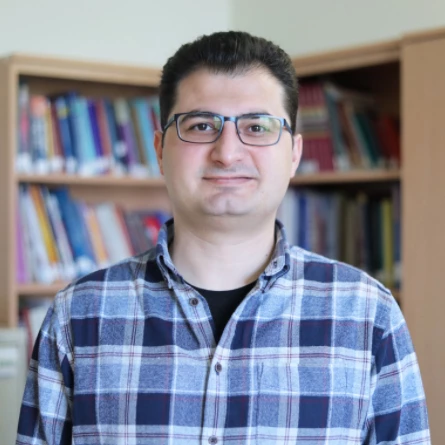 Daily inpatient care at Hrazdan Medical Center, Kotayk region. Armenia. Photo: Armine Grigoryan/World Bank
Daily inpatient care at Hrazdan Medical Center, Kotayk region. Armenia. Photo: Armine Grigoryan/World Bank
Lusine is recovering from a heart attack. She arrived at the clinic in Mkhchyan a week ago with chest pain and was referred to a regional hospital. Lusine had been diagnosed with diabetes ten years ago, requiring daily medication and occasionally specialist care. However, she did not qualify for hospital care and outpatient medication coverage through the state benefits package.
Between the income from her farm and the funds that her husband, Makich, sent from Russia, they could not purchase her medicines, which Lusine often missed. Months before the heart attack, she had felt her chest constrict but hesitated to visit the doctor. Without warning, the heart attack happened. The procedure to unclog the blood supply to her heart came at a high price. Lusine and her husband will be paying off the debt for years.
The burden of healthcare costs on Armenian households
Lusine’s brush with a fatal heart condition is not uncommon. Over 90 percent of deaths in Armenia result from chronic illnesses. These conditions require multiple healthcare providers to support lifestyle changes, treatment compliance, and complication management. Many Armenians with chronic diseases go without care. In fact, two in five Armenians with hypertension remain untreated. A significant barrier to care is the high cost, as some essential services are not universally covered through the state’s benefits package.
Out-of-pocket payments accounted for 85 percent of total health spending in Armenia in 2017. This is above the average in upper-middle-income countries, where spending is 33 percent. Unfortunately, those who most need health services – including the elderly and the poor – are often least likely to be able to pay for them. Saving for future healthcare needs at the individual level is difficult given the uncertainty of when or how much healthcare will be needed. To improve health in Armenia, finances cannot remain a barrier to receiving appropriate, timely care.
Pre-paid and pooled health financing can improve access
There is less uncertainty about healthcare needs at the aggregate level. Countries that have been successful at improving access to high-quality care have raised the required funds through general revenue or compulsory contributions. General revenue financing spreads the financial burden of raising revenue across a broad revenue base. These countries have also spread the financial risk of healthcare spending – through risk pooling – such that groups with higher healthcare needs are cross-subsidized by groups with fewer healthcare needs.
While the state often finances the contributions for the poorest, without compulsory contributions, groups with fewer healthcare needs exit the common risk pool, and individuals like Lusine end up in the “missing middle”. These individuals are left without state entitlements to provide coverage and are priced out of healthcare. Excluding groups from coverage results in delays in seeking care, expensive emergency services for complications, and more impoverished families.
Financing must be strategically allocated for better care
Pre-paid and pooled funds must be allocated effectively for better quality services and improved health outcomes. Armenia knows this well. When the Soviet Union dissolved in 1991, the state budget shrunk, and Armenia was faced with urgent maternal and child health needs. To mitigate these challenges, essential maternal and child health services were made universally accessible. The State Health Agency was established to pay providers for service delivery outputs instead of inputs, which effectively contributed to improved maternal and child health.
Decades later, in 2020, Armenia has turned to similar policies in response to COVID-19. Physicians receive bonuses for additional time spent on COVID-related care, hospitals are paid daily tariffs for beds used for COVID-19 cases, and special rates for services for children and pregnant women are aimed at preventing their neglect by busy providers. The state also guarantees coverage for all COVID-related care, so that financial barriers do not facilitate spread of the disease.
Strategic purchasing, which involves evidence-based and goal-driven decision-making about how funds are allocated, has been critical for ensuring that public funds contribute to improved health in Armenia, regardless of the challenge.
A second generation of health financing reforms
The Ministry of Health is championing universal health coverage reforms. These reforms, including strategic purchasing, are aimed at enabling every citizen to access essential high-quality healthcare. To facilitate the successful implementation of these reforms, the World Bank team has supported high-level policy discussions, reviewed relevant purchasing experience in other countries, and developed a report with recommendations to improve health sector allocations. This technical assistance was funded by the Korea-World Bank Partnership Facility.
The report, Purchasing for Better Health in Armenia, highlights the need for independent, objective, and data-driven decision-making through the State Health Agency to improve quality and coverage, with external oversight mechanisms to promote accountability. It also emphasizes that the routine review of provider performance and population health needs should inform updates of the benefits package, and provider selection and payment. Value-driven purchasing that leads to improved health outcomes can bolster the case for increased public health funding in Armenia.
The State Health Agency will continue to have limited influence over providers if it does not increase public health spending. And without incentives to adhere to clinical guidelines or adequate infrastructure, providers will not improve the quality of care. In summary, improving health outcomes in Armenia will be conditional on the success of purchasing reforms, sufficient pre-paid and pooled revenue, and improving service delivery readiness.
Read the full report and summaries in Armenian and English.





Join the Conversation